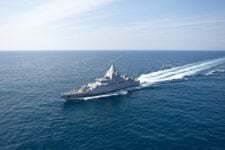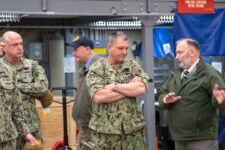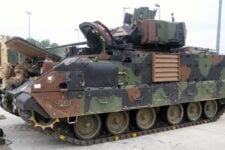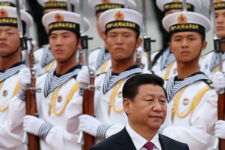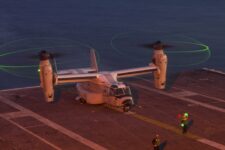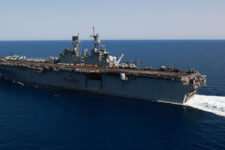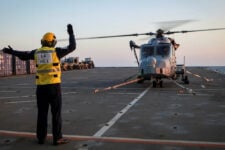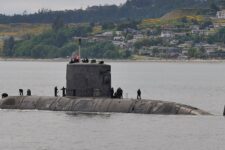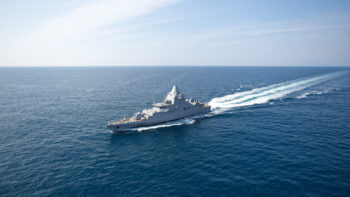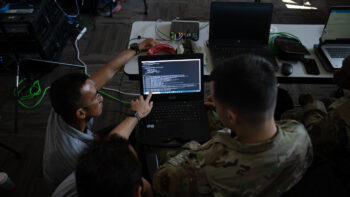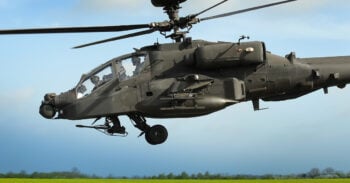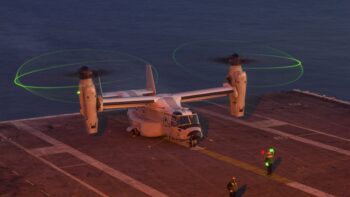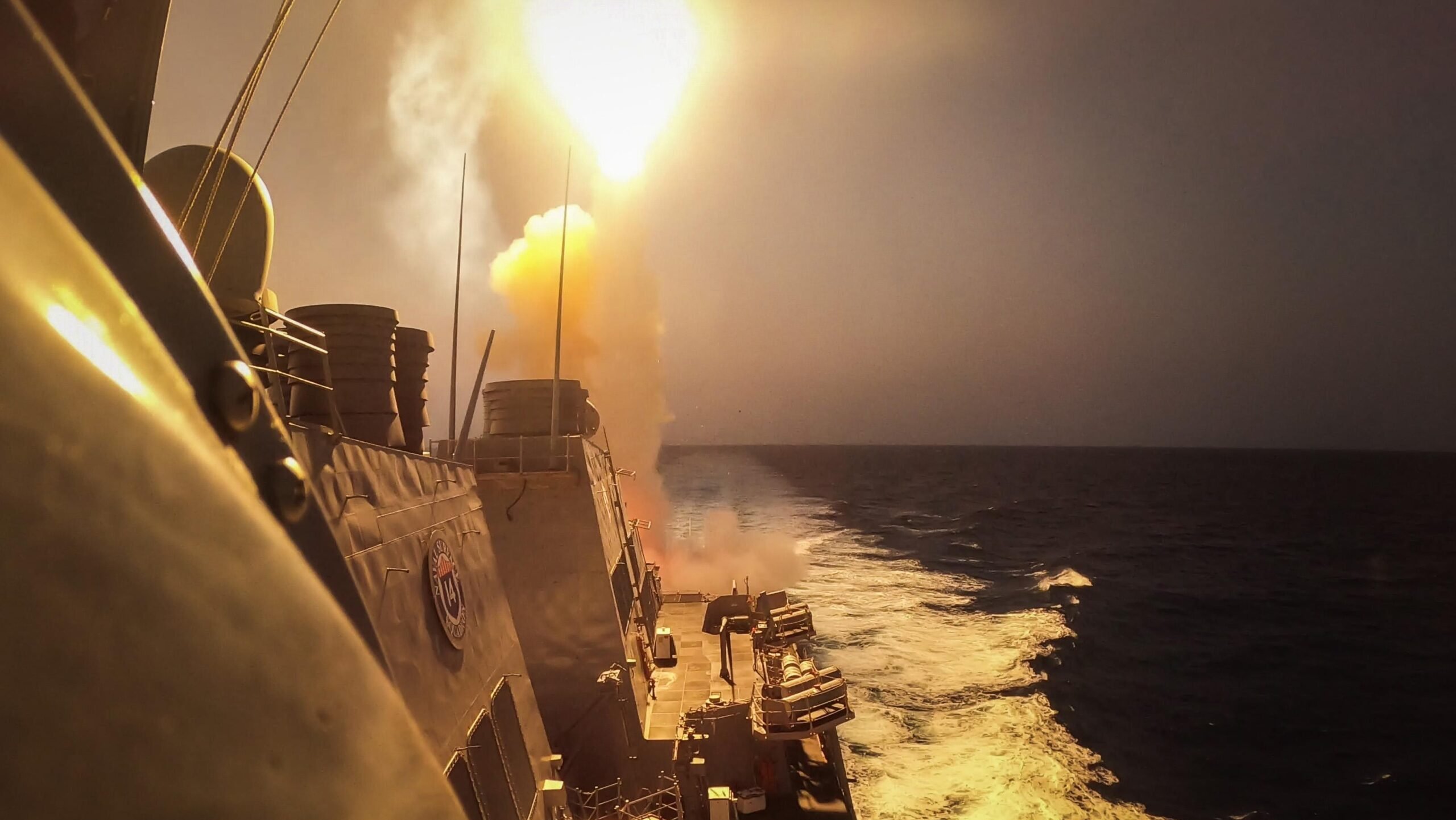
The Arleigh Burke-class guided-missile destroyer USS Carney (DDG-64) defeats a combination of Houthi missiles and unmanned aerial vehicles in the Red Sea, Oct. 19. (U.S. Navy photo by Mass Communication Specialist 2nd Class Aaron Lau)
WASHINGTON — The Navy plans to solicit industry later this month for “innovative proposals” centered around countering cross-domain attacks by uncrewed systems — a request that comes as a handful of warships and some civilian vessels are increasingly finding themselves subject to similar onslaughts in the Middle East.
“The purpose of this [request for solutions] is to solicit innovative proposals for addressing the challenge of countering multiple cross-domain uncrewed systems (UXS) that could be employed in coordinated attacks,” according to the notice, which added that a full solicitation is scheduled to be published on Jan. 31. “The government is seeking solutions capable of integrating information from undersea, maritime surface, ground, and air domains to effectively detect, identify, track, and mitigate multiple UXS.”
The notice, posted by the service’s warfare center based in Crane, Ind., said the request for solutions will be facilitated through the Expeditionary Missions Consortium. EMC – Crane is one of numerous consortiums the service established as a means to quickly engage large groups of industry and academia all focused on similar subject matter.
RELATED: Why Saudi Arabia And The UAE May Sit Out New US-Led Red Sea Initiative
Drone attacks, though all from the sky so far, have been a persistent threat for US Navy warships currently stationed in the Middle East, especially the Red Sea. The performance of Navy crews in recent weeks has even caught the attention of top service brass; Vice Adm. Brad Cooper, commander of US 5th Fleet, personally visited a destroyer this week to present awards to sailors for their performance in combat against threats launched by Houthi rebels in Yemen.
Today, VADM Cooper visited the guided-missile destroyer USS Carney (DDG 64) & presented combat medals to Sailors for their exceptional performance. He also recognized the whole crew with the Combat Action Ribbon. On Dec. 16, Carney Sailors shot down 14 Houthi UAVs in the Red Sea. pic.twitter.com/LFTqp36nnB
— U.S. Naval Forces Central Command/U.S. 5th Fleet (@US5thFleet) January 2, 2024
The attacks spurred a joint statement from the White House as well as the governments of 12 other nations today calling for the Houthi attacks to stop or they will “bear the responsibility of the consequences.”
Samuel Bendett, an adjunct senior fellow at the Center for New American Security, said the difficulties of tracking and defeating multiple types of unmanned systems has been on display more clearly during Russia’s war in Ukraine.
“What the war in Ukraine has demonstrated — and what the Houthis can copy — is the ability to stress ship-based and shore-based defenses with maritime and aerial drones,” Bendett, who studies unmanned systems and the Russian military, told Breaking Defense. “For their part, [the] Ukrainians are working to integrate data from multiple ground-based stationary and mobile sensors in identifying and tracking Russian Geran/Shahed drones. And Ukraine can hit most, but not all such [unmanned systems] in every attack.”
Bendett added that Russia has a “mixed record” of defeating every Ukrainian drone, “though they eventually claim to shoot down/destroy all of them.”
“The Ukraine conflict shows that tying together data from multiple sensors is possible but must be done quickly and efficiently to alert kinetic systems and units once the threat has been officially designated,” he said.
It’s unclear if either theater has seen a coordinated cross domain drone attacks, but it doesn’t appear the US Navy is waiting to get a head start on its defenses.
Emirate’s EDGE Group, Italy’s Fincantieri team up for $434M patrol vessel contract
The joint venture, dubbed Maestral, “will be awarded prime rights to non-NATO orders, and a number of strategic orders placed by selected NATO member countries … ,” according to a statement issued by the firm today.
